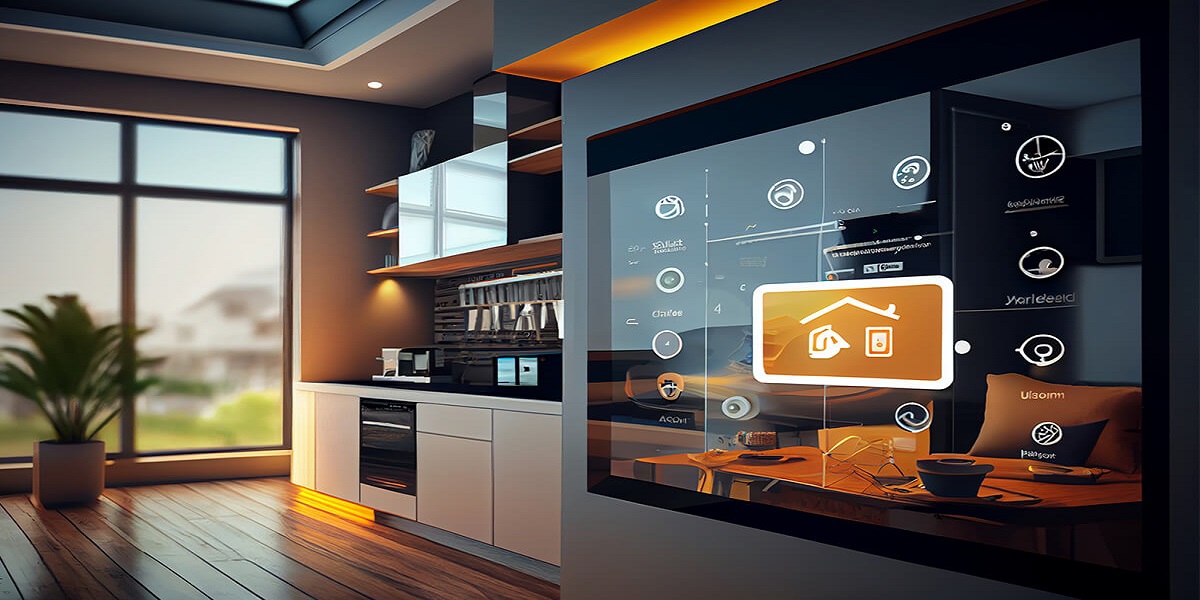Ads
We live in a digital age where home automation has become an affordable and increasingly common reality. Transforming your home into a smart space isn't just a matter of luxury or comfort, but also of energy efficiency and security. In this post, we'll guide you step by step to make your home a smart environment in no time.
First, we'll explore what home automation is, how it works, and its most notable benefits. You'll also understand why home automation is an investment that can increase the value of your property, reduce your utility bills, and improve your quality of life.
Ads
Second, we'll show you how you can automate your home easily and efficiently, without needing to be a tech expert. From lighting and air conditioning to appliances and security, we'll cover the different areas where you can incorporate home automation into your home.
Finally, we'll share some tips and tricks to help you get the most out of your smart home. This way, you can enjoy a home that's not only comfortable and convenient, but also adapts to your needs and lifestyle. Don't wait any longer and discover how to make your home a smart space.
Ads
The first steps towards home automation
Starting your smart home journey can seem daunting, but it's actually quite simple with the right approach. The key is to identify which aspects of your home you'd like to automate and then research products and systems that suit your needs.
The first step is to define which areas of your home you want to automate, such as lighting, security, or HVAC. Then, choose compatible and scalable devices to ensure efficient integration and a seamless experience.
Selecting a home automation system
There are several home automation systems available on the market, each with its own features and benefits. Some of the most popular include Google Home, Amazon Echo (Alexa), and Apple HomeKit. All of these systems allow you to control a variety of smart devices through a single interface, making smart home management much easier.
Equipping your home with smart devices
Once you've chosen a home automation system, the next step is to select the smart devices you want to install in your home. These can range from smart lights and plugs to door locks, security cameras, thermostats, and more.

Smart lights and plugs
Smart lights and plugs are one of the most common entry points into home automation, as they're relatively affordable and easy to install. You can schedule lights to turn on and off at specific times, or even control them remotely via your smartphone.
Smart door locks
Smart door locks offer a level of security and convenience not possible with traditional locks. You can lock and unlock your door remotely, and you can even program temporary access codes for visitors or service workers.
Setting up your smart home
Once you have all your smart devices installed, the next step is to configure them to work together the way you want. This may involve creating "scenes" or "routines" that automate certain actions based on certain conditions.

Creating scenes
Scenes allow you to control multiple smart devices with a single command. For example, you could create a “Good Night” scene that turns off all the lights, lowers the thermostat temperature, and locks all the doors with a single command.
Creating routines
Routines are similar to scenes, but are designed to automate actions based on certain conditions. For example, you could create a routine that turns on the lights and raises the thermostat when your alarm goes off in the morning.
Keeping your home smart
Finally, it's important to remember that maintaining a smart home requires a certain level of maintenance. This may involve regularly updating your devices' software, troubleshooting technical issues, and replacing devices that become obsolete.
Updating the software
As with any technology, home automation devices require periodic software updates to continue functioning optimally. These updates often include security fixes, so it's important to install them as soon as they become available.
Solving technical problems
Although most home automation systems are reliable, you may encounter technical issues from time to time. If this happens, it's helpful to have a good understanding of how your system works and how to troubleshoot basic issues.
Conclusion
In conclusion, transforming your home into a smart home may seem challenging at first, but with the right strategy, it becomes an accessible and rewarding process. The key is to identify your needs, select the home automation system that best suits them, and equip your home with smart devices that bring comfort, security, and efficiency to your daily life.
Smart lights and plugs, door locks, thermostats, and security cameras are just a few examples of how home automation can facilitate and improve your routine. Plus, you can configure these devices to work together, creating scenes and routines that automate certain actions based on your needs.
On the other hand, it's important to keep in mind that maintaining a smart home requires a certain level of maintenance. Regular software updates are necessary to ensure optimal device performance and keep your home secure. Likewise, technical issues may arise from time to time, so having a good understanding of your system can be very helpful.
Ultimately, home automation offers you the opportunity to make your home a safer, more efficient, and more comfortable space. With the right approach, you can make your home a smart home in no time.



